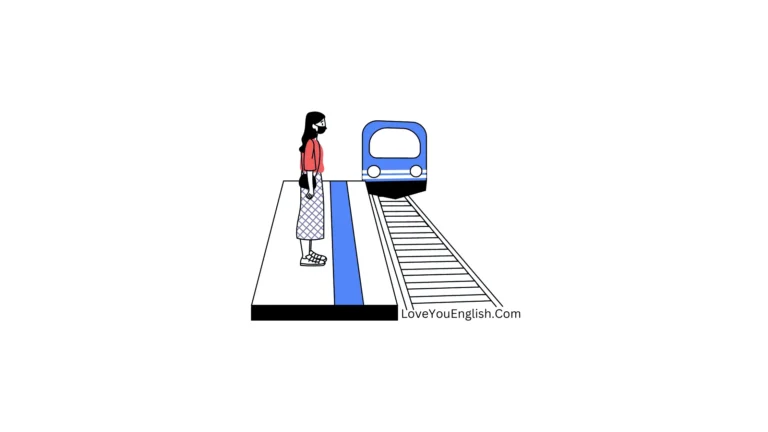English Dialogues About Content Creation
Sharing is caring!
Alex: Hey Jamie! I’ve been thinking about diving into content creation seriously. I see so many people doing it these days, and I want to understand more about it. Have you had any experience with content creation?
Jamie: Hi Alex! Yes, I’ve been creating content for a few years now. It’s a fascinating field with a lot of potential. What aspect are you interested in? Blogging, videos, social media, or something else?
Alex: I’m leaning towards blogging and possibly videos. I’ve heard that blogging is a great way to build an audience and establish expertise. But I’m unsure about how to start. What do you think are the first steps?
Jamie: That’s a great choice! Blogging is indeed a powerful tool for building an audience. The first steps typically involve choosing your niche and target audience. What topics are you passionate about, and who do you want to reach?
Alex: I’m passionate about personal development and productivity. I’d like to help people improve their lives through actionable advice and insights. I’m thinking my target audience might be young professionals or students.
Jamie: That sounds like a fantastic niche! Next, you should think about your blog’s structure and content strategy. Start by creating a content calendar with topics that align with your audience’s interests. This will help you stay organized and consistent.
Alex: That makes sense. How do you come up with content ideas? Do you follow any specific methods or tools?
Jamie: I use a few strategies for brainstorming content ideas. One method is to keep track of questions or problems I encounter in my own life and find solutions to them. I also look at trending topics in my niche and see what gaps I can fill. Tools like Google Trends and BuzzSumo are great for finding popular topics and keywords.
Alex: I’ll definitely look into those tools. What about SEO? I’ve heard that optimizing content for search engines is crucial. How do you handle that?
Jamie: SEO is definitely important for driving traffic to your blog. Start by researching keywords relevant to your niche and use them naturally in your posts. Additionally, focus on creating high-quality, valuable content that answers your audience’s questions. On-page SEO elements like meta descriptions, header tags, and alt text for images also play a role.
Alex: Got it. I’ve also been considering branching into video content. How do you think it compares to blogging?
Jamie: Video content has its own set of advantages. It’s engaging and can convey emotions and personality in a way that text alone might not. Videos can be particularly effective for tutorials, reviews, or behind-the-scenes looks. However, it can be more time-consuming and requires different skills, such as editing and creating visually appealing content.
Alex: True, I’ve heard that video production can be quite involved. Do you have any tips for getting started with videos?
Jamie: Absolutely! Start with the basics: a good camera or smartphone with decent video quality, and a quiet, well-lit space. Plan your content ahead of time and create a script or outline to keep you on track. Editing can make a huge difference, so familiarize yourself with video editing software like Adobe Premiere Pro or even simpler tools like iMovie.
Alex: That sounds manageable. What about promoting content? I know creating great content is just part of the process. How do you get it out there?
Jamie: Promotion is key! Utilize social media platforms to share your content and engage with your audience. Join relevant groups or forums where you can share your expertise and build relationships. Email marketing is another powerful tool—build a mailing list and send out newsletters with updates and valuable content.
Alex: I’ll keep that in mind. Do you think it’s important to engage with your audience through comments and feedback?
Jamie: Absolutely! Engaging with your audience helps build a community and fosters loyalty. Respond to comments, ask for feedback, and be active in discussions. It shows that you value your readers’ opinions and are invested in providing them with value.
Alex: Thanks for all the tips, Jamie. I feel more confident about getting started with content creation now. Is there anything else you think I should know?
Jamie: Just one more thing—be patient and persistent. Building an audience and seeing results takes time. Keep creating valuable content, stay consistent, and don’t get discouraged if you don’t see immediate success. It’s a journey, and persistence often pays off.
Alex: Thanks, Jamie. I really appreciate your insights. I’m excited to start this journey!
Jamie: You’re welcome, Alex! I’m excited for you too. If you have any more questions along the way, feel free to reach out. Good luck with your content creation!
More conversations:
- Spoken English Conversations on A Train Journey
- Spoken English Conversations at A Grocery Store
- Spoken English Conversations at An Airport
- English Dialogues About Work-Life Balance
- English Dialogues About The Impact of Music
English Conversations Practice
English Dialogues About Content Creation
Sam: Hey Taylor, I’m thinking of stepping up my content creation game and I could use some advice. I want to make sure I’m not just creating content but actually engaging my audience effectively. Any tips?
Taylor: Hey Sam! That’s a great goal. Engaging your audience is crucial for building a loyal following. Let’s start with your content strategy. Do you have a plan for what kind of content you want to create and how you want to present it?
Sam: I have some ideas but haven’t formalized a strategy yet. I want to cover a range of topics related to health and wellness, but I’m not sure how to structure it or how often I should post.
Taylor: Structuring your content can make a big difference. Consider creating a content calendar where you plan out your topics and posting schedule. For health and wellness, you might want to mix up your content types—articles, videos, infographics, and even interactive content like quizzes or challenges.
Sam: That sounds like a good approach. How often should I be posting? Is there a best practice for frequency?
Taylor: It depends on your capacity and goals. Consistency is key, so choose a frequency that you can maintain. Some creators post daily, while others might go with weekly or bi-weekly. Start with what feels manageable and adjust as you go along.
Sam: Got it. What about engaging with my audience? How can I make sure they feel involved and valued?
Taylor: Engagement is all about creating a dialogue. Encourage your audience to interact with your content by asking questions or including calls to action. For example, you can end your blog posts with a question and invite readers to share their thoughts in the comments.
Sam: I like that idea. Are there any specific tools or platforms you recommend for managing and analyzing audience engagement?
Taylor: Absolutely. Tools like Google Analytics can help you track how your content is performing and understand your audience’s behavior. Social media platforms often have built-in analytics that provide insights into engagement metrics. Tools like Buffer or Hootsuite can also help manage and schedule your social media posts.
Sam: I’ll definitely check those out. I’ve heard a lot about building an email list. How important is that for audience engagement?
Taylor: Building an email list is incredibly important. It allows you to communicate directly with your audience and share updates, exclusive content, or special offers. Make sure to offer something valuable in exchange for their email address, like a free e-book or a helpful guide.
Sam: That makes sense. What kind of content should I include in my email newsletters?
Taylor: Your newsletters can include a variety of content: updates on new blog posts, exclusive insights or tips, upcoming events, or special promotions. Personalization is key, so tailor your content to your audience’s interests and preferences.
Sam: Great tips! How can I handle negative feedback or criticism from my audience?
Taylor: Negative feedback is a natural part of content creation. The key is to handle it professionally. Respond calmly and constructively and use it as an opportunity to improve. Sometimes, criticism can provide valuable insights into how you can better meet your audience’s needs.
Sam: I’ll keep that in mind. Is there anything else I should consider when it comes to keeping my audience engaged?
Taylor: One thing to consider is creating a sense of community. Engage with your audience not just through your content but also through social media and other platforms. Host live Q&A sessions, participate in discussions, and recognize your most active followers. Building a community helps foster loyalty and deeper connections.
Sam: Thanks, Taylor. This has been really helpful. I feel more prepared to create and engage with my audience now.
Taylor: You’re welcome, Sam! I’m glad I could help. If you have any more questions or need further advice, don’t hesitate to ask. Good luck with your content creation!
Sam: Will do. Thanks again!
Sharing is caring!







